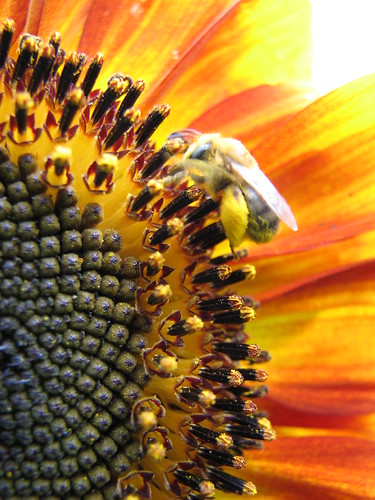Better People Through Better Food. Liz mentioned in a comment for an earlier post the need to encourage more people to get out and plant a garden. I've been mulling over the comment and have decided to address that issue every Friday. I love gardening almost more than eating the things I grow. I may be a little odd that way. If you are new to gardening, or have been gardening a long time, but are stuck in a rut; perhaps this will help. I've found a lot of inspiring stories and information on various blogs and I'd love it if others would share their thoughts. So let's start with some of the basics.
YOU, THE GARDENER
Many people are totally in awe of the ability to grow anything. It's my belief that anyone can garden. It's a matter of knowing needs and limitations - both the plant's and the gardener's. We'll start with the gardener. What are your needs? What are your capabilities? What are your limitations? How much time do you want to spend in the garden? How much time can you realistically and honestly spend in the garden? The last two questions often have very different answers. Discovering a little bit about what kind of gardener you are will help determine what kind of garden you will need.
BUT WHERE? A FEW IDEAS...
Many a gardener, myself included, has been overwhelmed by too big a task. Decide what you are truly capable of doing and plan accordingly. It is much easier to start small and grow than to be overextended and feel defeat with too large a garden. A large garden takes a lot of time to prepare and plant. A small garden can take an afternoon to prepare and a few minutes a day to maintain. If you have no garden, but would like to start one, look for the future location now at the peak of the growing season. Pay attention to where the sun is during the day. Vegetables are generally not shade plants and need full sun for at least 6 hours a day. We'll talk more about preparing a bed later. For now, if you have no garden space you can still, even this late in the summer growing season plant things to enjoy. Check your local garden center for plants or buy a pack of fast growing seeds. Soon, in many regions, you can plant for cool weather fall crops (they are often the same crops that are ready early in the spring).
Vegetables can be stuck almost anywhere you can find a space. When we were the uber-urbanites, living in the city (our total lot size was close to the size of my current vegetable garden) we grew tomatoes and peppers on the south side of our porch where the sun managed to squeeze through the mature trees. Lettuce and radishes was planted in the spring intermingled with pansies and impatiens. It was ornamental as well as tasty. I have a friend who lives in a rather restrictive community. The homeowners' association tells people what color they can paint their front doors and how high their grass can be. She's rather stealthfully planted her yard with fruit trees and artfully arranged a garden that feeds her family for most of the summer and beyond. Charlie even had a design client in Kansas City who spent hundreds of thousands of dollars on a very classic, formal landscape and managed to have a spot to grow her own tomatoes each summer.
No space to plant? Find a few 5 gallon or larger black plastic pots. These are used for shrubs, and small trees. Your local garden center may have a few they'd toss your way. Fill them with potting mix (preferably organic) and you have instant garden space. Tomatoes thrive in pots and are less likely exposed to ground-born diseases. My back patio is filled with them right now.
As you start your garden, read. There are many gardening books available. One of my favorites is The Vegetable Gardener's Bible, by Edward C. Smith. It's full of easy to read, practical information. Check your local Agricultural Extension - they aren't just for farmers! They can often give very practical advice for your area.
And my last word of advice this week is "have no fear". Plants are actually quite easy once you know what they need. Generally they just need the right amount of water, nutrients and sunlight. Finding that out is often as easy as looking in a book or asking a friend. Sometimes a little experimentation is needed, but that can be part of the fun.
Next Week: An easy, almost no sweat way to prepare a garden bed!




I'm a big fan of this post, Maggie. I may have to add you to my list of gardening mentors. K?
ReplyDeleteLove the post! I just planted my first garden in more than 20 years and this post is *very* appropriate to my future plan. thanks for keeping it up!
ReplyDeleteThis a great post, Maggie, and will make for a fabulous series! I'm so glad you decided to do this. :)
ReplyDeleteWhy thank you all! I'll keep digging up more gardening help. Oh god, did I just say that?
ReplyDeleteHi Maggie,
ReplyDeleteI just stumbled upon your post, and I'm so happy to read that there are folks out there with restrictive HOA's who still manage to grow fruit and veggies in their yards. We already have tomatoes in pots like you suggested,and they've always done well. My husband knows I'd rather live on a farm, and so he's been very supportive since he really wanted to move to a neighborhood. I've been fantasizing about getting a mini-goat and trying to disguise it as a dog, but I can't figure out how to pull that off.
Thanks for the great posts!